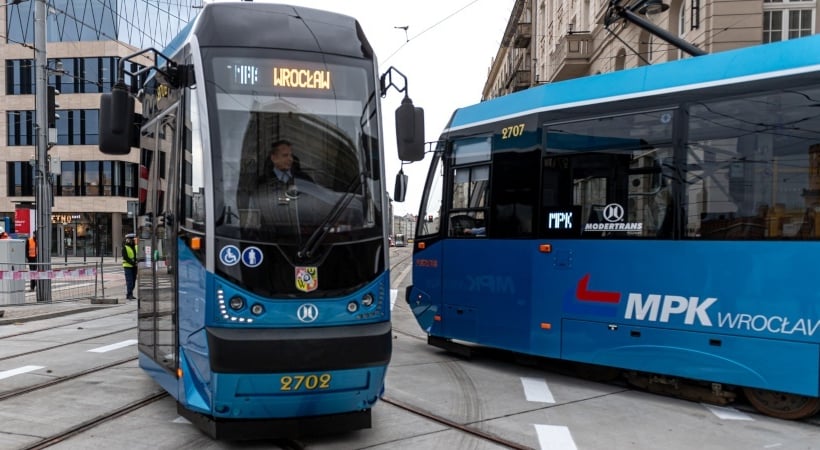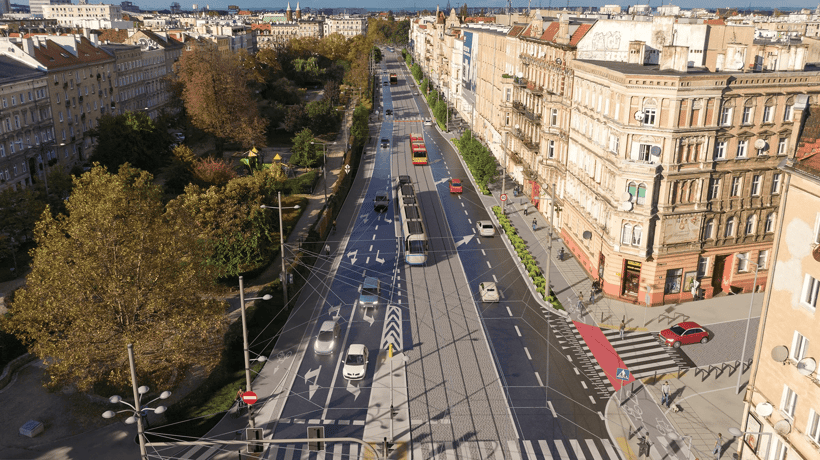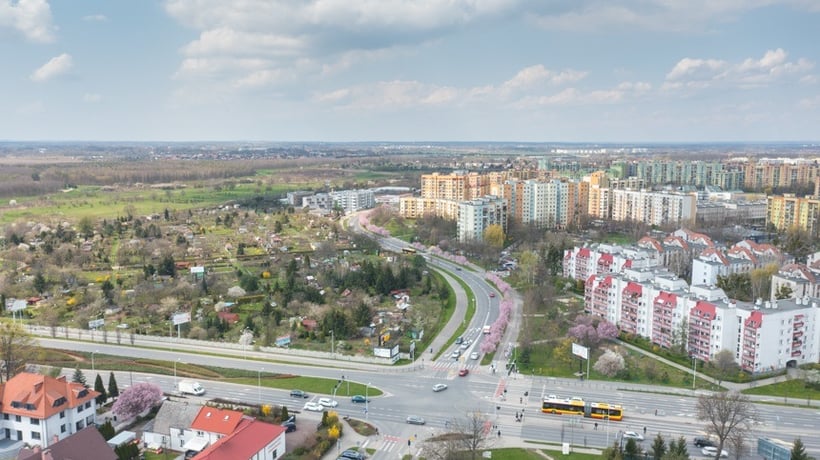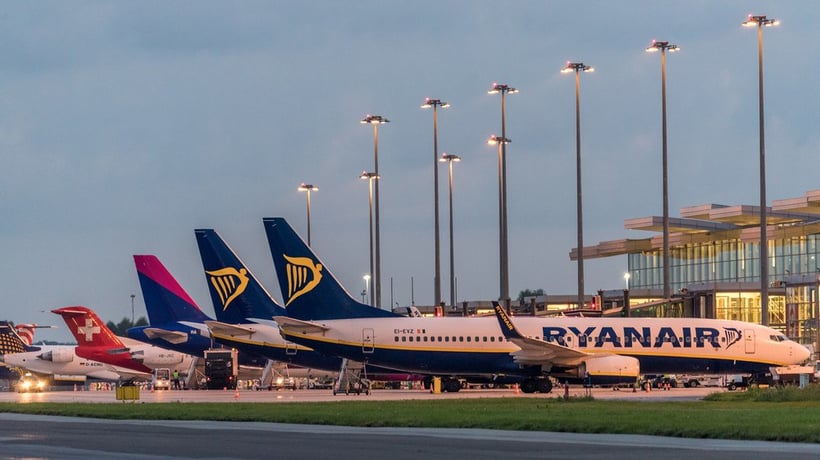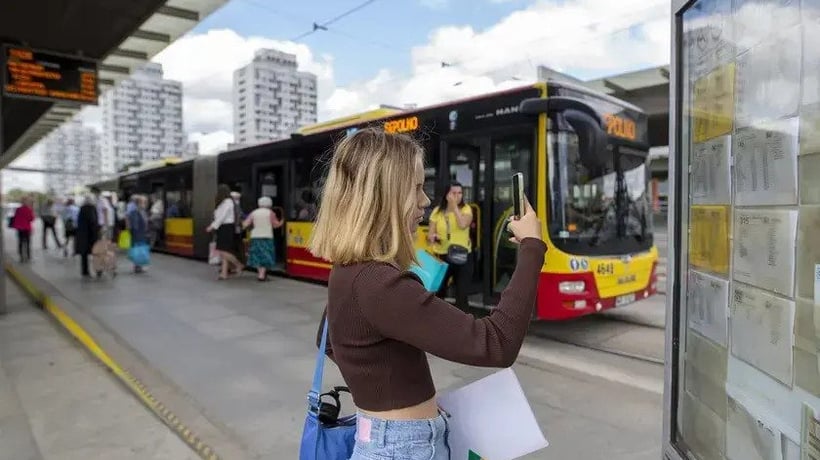The post-war history of the Wroclaw tram transportation began on 22 August 1945, when the first tram line was launched following the end of World War II. The trams used German carriages renovated by Polish technicians.
First and new engine-powered trams were rolled out no sooner than in 1956. "Those two-axle, engine-powered N trams were produced by Konstal in Chorzów. 17 such trams were provided together with their similar 16 ND extensions. Later in history, MPK Wroclaw was allocated with N carriages, both brand new and phased out from Warsaw," enumerates Tomasz Sielicki, an MPK Wroclaw employee and a researcher in public transport history. N carriages served the residents of Wroclaw until 1991.
 (The photograph was taken in the late 1980s in Plac Powstańców Wielkopolskich. Konstal 4N can be seen to the front of the tram, and two Nd type carriages to the end of it. Photograph: Janusz Korzeniowski)
(The photograph was taken in the late 1980s in Plac Powstańców Wielkopolskich. Konstal 4N can be seen to the front of the tram, and two Nd type carriages to the end of it. Photograph: Janusz Korzeniowski)
Support from factories
In 1969, Wroclaw received 102 N trams from Konstal Chorzów, the equipment which is now legendary and was extremely modern at the time. Subsequent deliveries were soon to follow suit. In 1970, Wroclaw's local and regional factories funded the purchase of 25 102Na tram carriages. "To tell them apart from 102 tram carriages, these trams were painted ecru and blue, the colour commemorated in a song performed by Maria Koterbska," says Janusz Korzeniowski from the Wroclaw Lovers Association. In total, from 1969–1974, the city expanded its tram stock with 104 new carriages. The era of 105 N trams came soon afterwards.  (A 105 tram at the Centenary Hall. Photograph: Janusz Korzeniowski)This went down as the largest delivery in the history of MPK, and it involved over 350 tram carriages. Last trams of this kind appeared in the streets of Wroclaw in the early 1990s. Accordingly, 450 tram carriages (which translates into around 225 trams) were to be found at MPK depots in 1994. The majority of them were 102N, 105N and Na trams. Later on MPK would refrain from making any new purchases. The carrier mainly renovated its existing tram stock.
(A 105 tram at the Centenary Hall. Photograph: Janusz Korzeniowski)This went down as the largest delivery in the history of MPK, and it involved over 350 tram carriages. Last trams of this kind appeared in the streets of Wroclaw in the early 1990s. Accordingly, 450 tram carriages (which translates into around 225 trams) were to be found at MPK depots in 1994. The majority of them were 102N, 105N and Na trams. Later on MPK would refrain from making any new purchases. The carrier mainly renovated its existing tram stock.
Low-floor era
A new tram era came at the beginning of the 21st century. In 2004 and 2005, MPK received first trams designed and produced by Poland-based Protram, including 204 WrAs (6 trams) and 205WrAs models.
Since 2006, MPK has also bought only those trams that are suitable for persons with disabilities (low-floor sections). Accordingly, from 2006–2011, 26 205 WrAs trams entered the Wroclaw network, which involved the spending of 87 million PLN gross. The year 2006 brought first deliveries of Skoda 16T trams. Over the course of two years, 17 trams from the Czech Republic were delivered, the majority of which were suitable for persons with disabilities. (Skoda 16 T. Photograph: MPK Wrocław) The last large delivery to date was completed from 2010–2011, when the capital of Lower Silesia received first swing and air-conditioned vehicles, namely Skoda 19T trams. The EU subsidised Wroclaw to buy 31 such vehicles. The cost of the trams alone is estimated at 250 million PLN. Over the last few years, a total of 74 trams suitable for persons with disabilities entered the Wroclaw network. The overall cost of their purchase topped half a billion PLN!
(Skoda 16 T. Photograph: MPK Wrocław) The last large delivery to date was completed from 2010–2011, when the capital of Lower Silesia received first swing and air-conditioned vehicles, namely Skoda 19T trams. The EU subsidised Wroclaw to buy 31 such vehicles. The cost of the trams alone is estimated at 250 million PLN. Over the last few years, a total of 74 trams suitable for persons with disabilities entered the Wroclaw network. The overall cost of their purchase topped half a billion PLN!
![Wroclaw trams: see how they changed [PHOTOS]](https://www.wroclaw.pl/cdn-cgi/image/w=1200,h=600,fit=crop,f=avif/en/files/news/14571/10813974_10204014161186190_1567794873_o.jpg)

